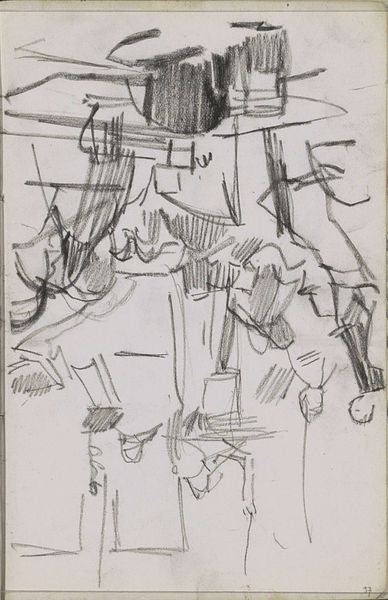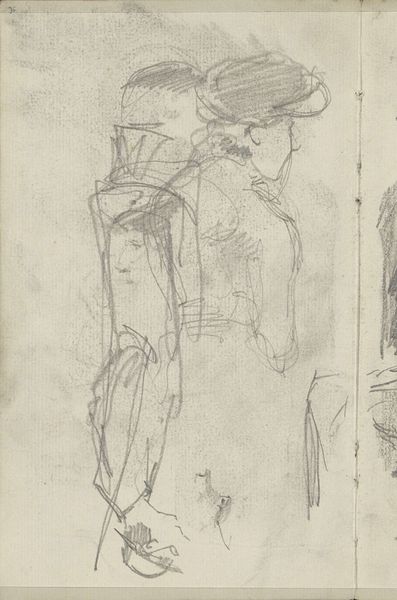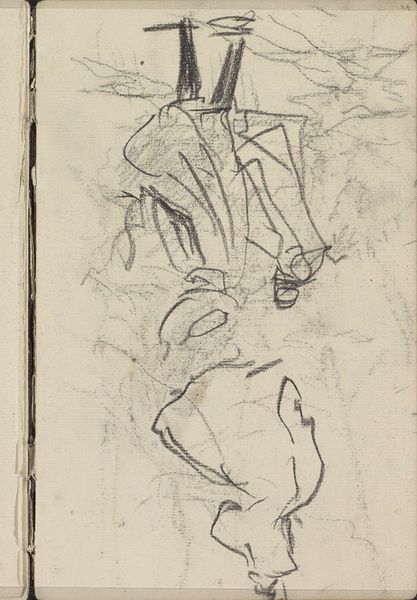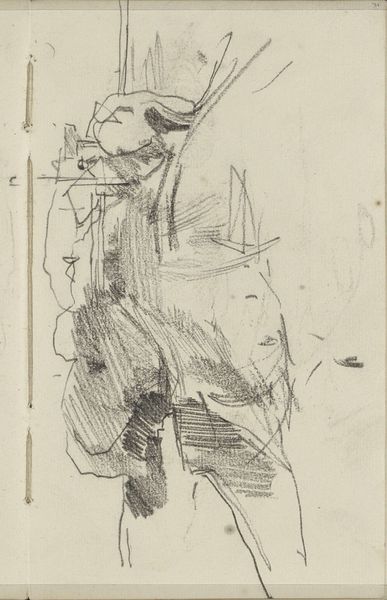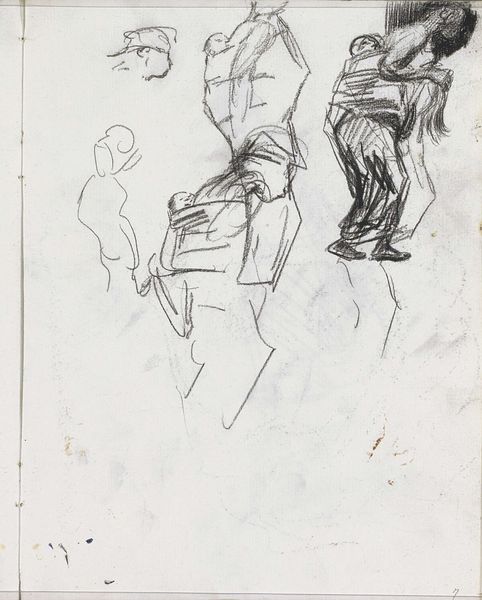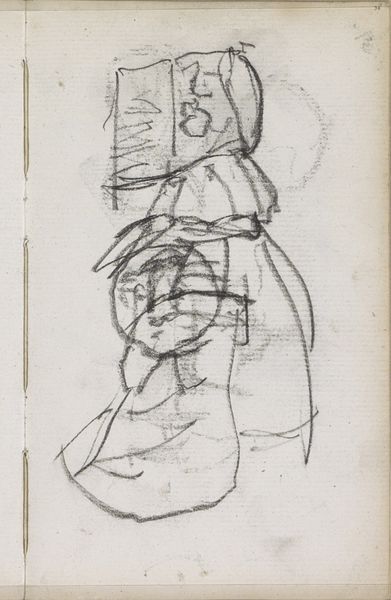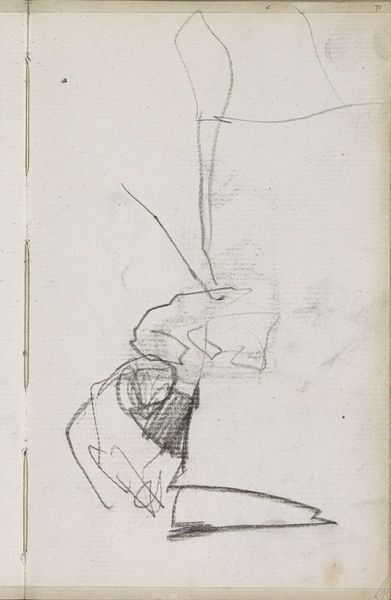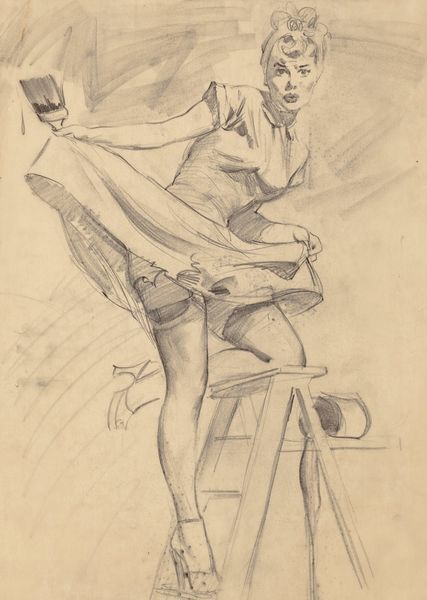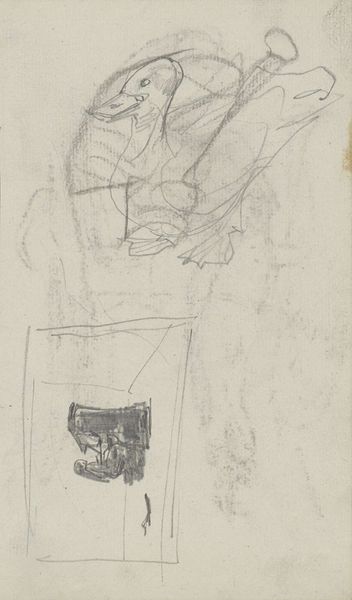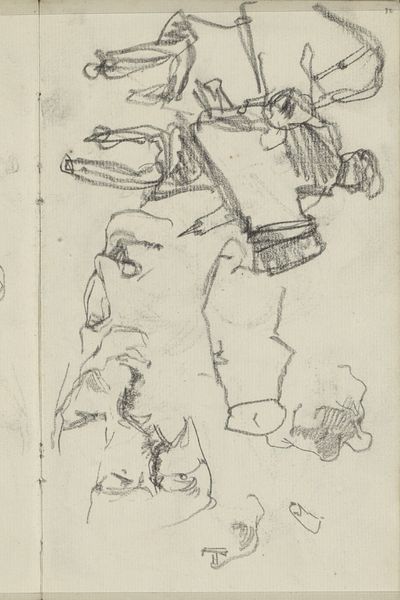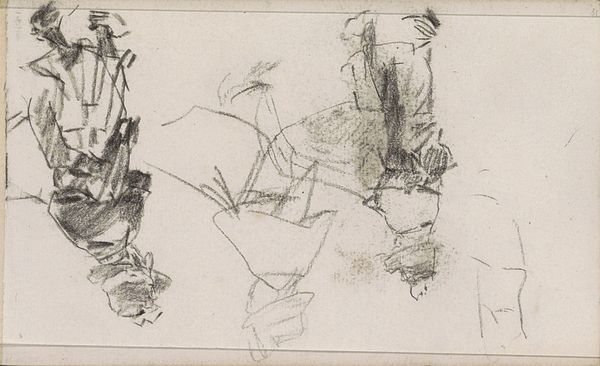
Copyright: Rijks Museum: Open Domain
Curator: Here we have "Figuurstudies," or "Figure Studies," by Isaac Israels, created sometime between 1875 and 1934. The work, held here at the Rijksmuseum, is rendered in graphite and pencil on paper. Editor: Immediately, I'm struck by how delicate these lines are, almost tentative, like catching a fleeting thought. They're also sort of ghostly, like figures emerging from mist. Curator: That's a wonderful observation. What we see here reflects the influence of Impressionism on Israels' work, particularly his fascination with capturing the ephemeral moments of everyday life, specifically focusing on children and their evolving identities. Editor: You know, there's a real sense of intimacy here, of observing these kids in a moment when they aren't aware of being watched. It's not a formal portrait. Curator: Precisely! Consider how the lack of precise detail contributes to that sense of informality. We gain insight into childhood and ideas about its representation during a transitional era, even as the figures’ own unique qualities are not represented fully. These faceless depictions serve more as types than individualized figures. Editor: They feel a little melancholic too, though it might just be the graphite against the pale paper making me think of faded memories. Curator: That melancholic tone might arise from what the image is implicitly about—a very class-bound and restrictive social order—rendered even more haunting in this ghostly rendering of lost innocence. Editor: This makes me wonder about Israels himself, and what compelled him to document these… suggestions of childhood? Curator: Israels was keen on representing all sectors of society. His work offers a commentary, intended or unintended, on power dynamics during a time of huge social change, even if this drawing might only be perceived now through our contemporary lens. Editor: I find myself strangely moved by these simple lines. They hint at so much, these barely-there people. Curator: And they serve as a visual reminder that art is never created in a vacuum. These figures offer us the opportunity to grapple with ideas of childhood, class, representation, and memory. Editor: I think you’re right. They give us something to think about long after we leave them behind.
Comments
No comments
Be the first to comment and join the conversation on the ultimate creative platform.
